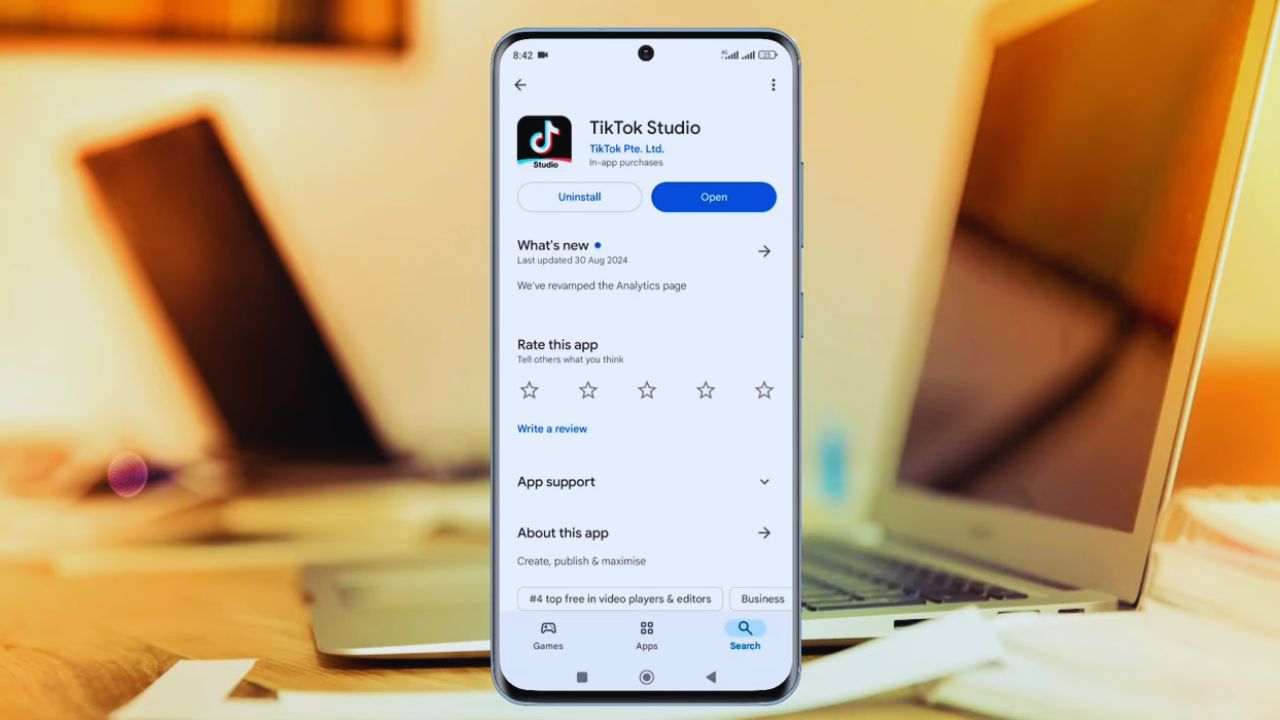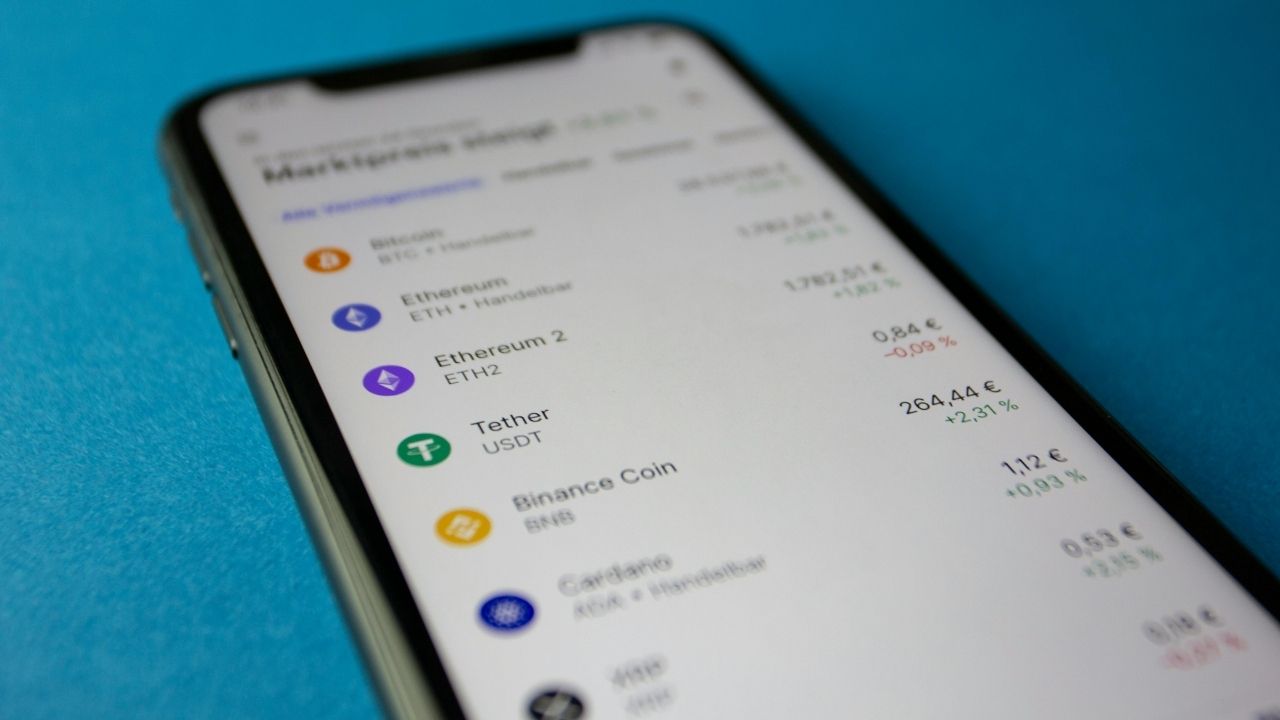Negotiation is an art and a science. It’s a skill that can make or break deals, shape relationships, and determine the success of businesses and individuals alike. Whether you’re a seasoned professional or just starting, mastering negotiation skills can give you a significant edge in your personal and professional life.
This comprehensive guide will explore 12 essential negotiation skills to help you close any deal. These skills are not just theoretical concepts; they are practical tools that have been proven effective in real-world negotiations across various industries and scenarios.
From preparation and active listening to emotional intelligence and creative problem-solving, each skill we’ll discuss plays a crucial role in the negotiation process. By honing these skills, you’ll be better equipped to navigate complex negotiations, find win-win solutions, and ultimately close deals that benefit all parties involved.
Let’s dive into these 12 negotiation skills and learn how to apply them effectively in your next negotiation.
1. Thorough Preparation
Preparation is the foundation of successful negotiation. It’s the work you do before you even sit down at the negotiation table, and it can make all the difference in the outcome of your deal.
Why Preparation Matters
Thorough preparation gives you confidence and control. It allows you to anticipate potential challenges, understand your position better, and identify areas where you can be flexible. When you’re well-prepared, you’re less likely to be caught off guard and more likely to make informed decisions during the negotiation process.
Key Elements of Preparation
1. Research:
Gather as much information as possible about the other party, the market conditions, and the subject of negotiation. This might include:
- Company background and financial health
- Industry trends and challenges
- Recent news or developments that might impact the negotiation
- Cultural factors (critical in international negotiations)
2. Define Your Objectives:
Clearly outline what you want to achieve from the negotiation. This includes:
- Your ideal outcome
- Your bottom line (the minimum you’re willing to accept)
- Areas where you’re willing to make concessions
3. Understand Your Value:
Know what you bring to the table. This could be:
- Unique products or services
- Expertise or experience
- Resources or connections
4. Anticipate Questions and Objections:
Try to predict the other party’s questions or concerns and prepare your responses.
5. Develop Multiple Options:
Come up with several different scenarios that could satisfy both parties’ needs. This gives you flexibility during the negotiation.
6. Practice:
Conduct mock negotiations with colleagues or friends to practice your approach and refine your arguments.
Tools for Preparation
– SWOT Analysis:
Assess your Strengths, Weaknesses, Opportunities, and Threats in the negotiation.
– Negotiation Planning Worksheet:
A document that outlines your goals, strategies, and potential concessions.
– Stakeholder Analysis:
Identify all parties who might be affected by the negotiation and their interests.
The Impact of Preparation
A study by the Program on Negotiation at Harvard Law School found that negotiators who thoroughly prepare achieve better outcomes than those who don’t. Specifically, well-prepared negotiators could claim between 12% and 20% more value in their agreements.
Putting It Into Practice
Before your next negotiation:
- Set aside dedicated time for preparation.
- Create a preparation checklist tailored to your specific negotiation.
- Seek input from colleagues or mentors with similar negotiation experience.
- Review and refine your preparation materials regularly as new information becomes available.
Remember, thorough preparation doesn’t mean being rigid. It means being ready to adapt your approach based on the information and insights you’ve gathered.
2. Active Listening
Active listening is a crucial skill in negotiation that goes beyond simply hearing the words spoken by the other party. It involves fully concentrating on, understanding, responding to, and remembering what is being said.
Why Active Listening Matters
Active listening helps you:
- Understand the other party’s needs, motivations, and concerns
- Build rapport and trust
- Identify opportunities for mutual gain
- Avoid misunderstandings that could derail the negotiation
Critical Components of Active Listening
1. Full Attention:
Give your complete focus to the speaker. Avoid distractions like checking your phone or thinking about your next point while they’re talking.
2. Non-verbal Cues:
Use body language to show you’re engaged. This includes maintaining eye contact, nodding, and leaning slightly towards the speaker.
3. Paraphrasing:
Restate what you’ve heard in your own words to confirm your understanding. For example, “So what I’m hearing is…”
4. Asking Clarifying Questions:
When something is unclear, ask for more information. This shows you’re engaged and helps prevent misunderstandings.
5. Avoiding Interruption:
Let the other party finish their thoughts before responding. This shows respect and ensures you get the whole picture.
6. Empathetic Responses:
Acknowledge the speaker’s feelings and perspective, even if you disagree. This doesn’t mean you have to agree, but it shows you understand their point of view.
Techniques to Improve Active Listening
1. The HEAR Technique:
- Halt: Stop whatever you’re doing and give full attention
- Engage: Focus on the speaker
- Anticipate: Look forward to what they’ll say
- Replay: Think about what was said
2. Mindful Listening:
Practice being present in the moment and entirely focused on the conversation.
3. Reflection:
After the conversation, take a moment to reflect on what was said and how it impacts the negotiation.
The Impact of Active Listening
Research published in the Journal of Applied Psychology found that negotiators who practiced active listening could uncover more information about their counterparts’ interests and priorities, leading to more integrative (win-win) agreements.
Putting It Into Practice
During your next negotiation:
- Make a conscious effort to listen more than you speak.
- Practice paraphrasing key points to ensure understanding.
- Ask open-ended questions to encourage the other party to share more information.
- Pay attention to non-verbal cues that provide additional insight.
Remember, active listening is not just about gathering information. It’s about building a relationship and creating an atmosphere of mutual understanding and respect.
3. Emotional Intelligence
Emotional Intelligence (EI) in negotiation refers to the ability to recognize, understand, and manage your own emotions while also being aware of and influencing the feelings of others. This skill is crucial for navigating the complex interpersonal dynamics of negotiations.
Why Emotional Intelligence Matters
High emotional intelligence allows negotiators to:
- Remain calm under pressure
- Build stronger relationships with counterparts
- Read and respond to the emotional climate of the negotiation
- Manage conflicts more effectively
- Make more rational decisions by balancing emotions and logic
Key Components of Emotional Intelligence
- Self-awareness: Understanding your emotions, strengths, weaknesses, values, and motivations.
- Self-Regulation: Managing emotions and impulses, especially in high-stress situations.
- Motivation: Having a drive to achieve beyond expectations.
- Empathy: Understanding and considering others’ feelings in making decisions.
- Social Skills: Managing relationships to move people in desired directions.
Applying Emotional Intelligence in Negotiation
1. Recognizing Emotions:
Be aware of your emotional state and that of others. Are you feeling anxious? Does the other party seem frustrated?
2. Managing Emotional Reactions:
If you feel anger or frustration rising, take a moment to calm yourself before responding.
3. Creating a Positive Emotional Climate:
Use positive language and a collaborative tone to foster a constructive atmosphere.
4. Empathizing with the Other Party:
Try to understand their perspective and emotional state. This can help you find common ground.
5. Using Emotions Strategically:
While being genuine is necessary, you can strategically express certain emotions to influence the negotiation. For example, you are expressing enthusiasm about potential collaboration.
Techniques to Improve Emotional Intelligence:
- Mindfulness Meditation:
Regular practice can improve self-awareness and emotional regulation.
- Emotion Logging:
To identify patterns, keep a journal of your emotional responses during negotiations.
- Feedback Seeking:
Ask trusted colleagues for feedback on your emotional intelligence in professional situations.
- Scenario Planning:
Anticipate emotionally charged situations and plan your responses.
The Impact of Emotional Intelligence
A study published in the Journal of Conflict Resolution found that negotiators with higher emotional intelligence were more likely to achieve integrative outcomes in complex negotiations. They were better able to create value and find win-win solutions.
Putting It Into Practice
In your next negotiation:
- Before entering the negotiation, take a moment to assess your emotional state.
- Pay attention to the emotional cues of the other party.
- If tensions rise, suggest a brief break to allow emotions to cool.
- Use empathetic statements to show you understand the other party’s perspective.
Remember, emotional intelligence is not about suppressing emotions but understanding and managing them effectively to achieve better negotiation outcomes.
4. Effective Communication
Effective communication is the backbone of successful negotiation. It involves clearly expressing your ideas, actively listening to the other party, and ensuring mutual understanding.
Why Effective Communication Matters
Good communication in negotiation:
- Reduces misunderstandings and conflicts
- Builds trust and rapport
- Facilitates the exchange of information
- Helps in finding mutually beneficial solutions
- Increases the likelihood of reaching an agreement
Critical Elements of Effective Communication
- Clarity: Express your thoughts and proposals clearly and concisely.
- Adaptability: Adjust your communication style to suit the other party and the situation.
- Active Listening: Pay attention to what the other party says (as discussed in skill 2).
- Non-Verbal Communication: Be aware of body language, tone of voice, and facial expressions.
- Questioning: Use effective questioning techniques to gather information and clarify points.
- Feedback: Provide and solicit feedback to ensure mutual understanding.
Communication Techniques for Negotiation
1. “I” Statements:
Use “I” statements to express your thoughts and feelings without blaming or accusing. For example, “I feel concerned about the timeline” instead of “Your timeline is unreasonable.”
2. Framing:
Present information that highlights its benefits or aligns with the other party’s interests.
3. Chunking:
Break down complex information into smaller, more manageable pieces.
4. Mirroring:
Subtly mimic the other party’s communication style to build rapport.
5. Summarizing:
Regularly summarize critical points to ensure mutual understanding and track progress.
Overcoming Communication Barriers
- Language Differences:
Use interpreters in international negotiations and be aware of potential cultural misunderstandings.
- Jargon:
Avoid industry-specific jargon unless you’re sure the other party understands it.
- Assumptions:
Don’t assume the other party has the same information or perspective as you. Clarify and verify.
- Emotions:
Be aware of how emotions (yours and theirs) can affect communication.
The Impact of Effective Communication
Research published in the Negotiation Journal found that negotiators trained in effective communication techniques were 40% more likely to reach mutually beneficial agreements than those who didn’t receive such training.
Putting It Into Practice
In your next negotiation:
- Prepare critical messages in advance, ensuring they are clear and concise.
- Practice active listening and regularly summarize what you’ve heard.
- Pay attention to non-verbal cues and adjust your approach accordingly.
- Use open-ended questions to encourage information sharing.
- After the negotiation, reflect on the communication process and identify areas for improvement.
Remember, effective communication is a two-way street. It’s about getting your message across, understanding the other party’s perspective, and finding common ground.
5. Flexibility and Adaptability
Flexibility and adaptability are crucial skills in negotiation that allow you to respond effectively to changing circumstances, unexpected information, or shifts in the other party’s position.
Why Flexibility and Adaptability Matter
Being flexible and adaptable in negotiations:
- Helps you navigate unexpected challenges or opportunities
- Allows you to find creative solutions to impasses
- Improves your ability to build rapport and maintain relationships
- Increases the likelihood of reaching a mutually beneficial agreement
Critical Aspects of Flexibility and Adaptability
- Open-Mindedness: Being willing to consider different perspectives and alternatives.
- Quick Thinking: The ability to process new information rapidly and adjust your approach.
- Emotional Resilience: Maintaining composure when faced with unexpected developments.
- Creative Problem-Solving: Finding innovative solutions when traditional approaches aren’t working.
- Willingness to Compromise: Preparing to make concessions to pursue a larger goal.
Strategies for Enhancing Flexibility and Adaptability
1. Scenario Planning:
Consider various possible outcomes and how you might respond before negotiating.
2. Active Listening:
Pay close attention to the other party’s needs and concerns, as they may shift during the negotiation.
3. Asking “What If” Questions:
Explore hypothetical scenarios to uncover potential areas of flexibility.
4. Taking Breaks:
If you’re feeling stuck, suggest a short break to allow both parties to reassess and come back with fresh perspectives.
5. Focusing on Interests, Not Positions:
By understanding both parties’ underlying interests, you can be more flexible in finding solutions that meet those interests.
Overcoming Barriers to Flexibility:
- Fear of Losing Ground: Flexibility doesn’t mean giving in. It’s about finding better solutions.
- Ego: Don’t let your ego prevent you from considering alternative viewpoints or making necessary concessions.
- Lack of Authority: Secure some autonomy before negotiations to allow flexibility.
- Time Pressure: While deadlines are important, be willing to extend timelines if it means reaching a better agreement.
The Impact of Flexibility and Adaptability
A study in the International Journal of Conflict Management found that negotiators with flexibility (the ability to adapt thinking and behavior in response to environmental changes) achieved significantly better outcomes in complex negotiations.
Putting It Into Practice
In your next negotiation:
- Enter with a clear plan, but be prepared to deviate from it if necessary.
- Regularly check in with yourself about your level of flexibility. Are you being too rigid?
- If you reach an impasse, try reframing the issue or exploring new options.
- Practice “yes, and” thinking instead of “yes, but” to build on ideas rather than shutting them down.
Remember, being flexible doesn’t mean abandoning your core objectives. It means being open to different ways of achieving those objectives and adjusting your approach based on new information or changing circumstances.
6. Creative Problem-Solving
Creative problem-solving is the ability to approach negotiations with an innovative mindset, finding unique solutions that satisfy the interests of all parties involved. This skill is precious when dealing with complex negotiations or when traditional approaches fail to yield results.
Why Creative Problem-Solving Matters
Creative problem-solving in negotiations:
- Helps break deadlocks and overcome impasses
- Uncovers hidden value and creates win-win situations
- Differentiates you from competitors in business negotiations
- Leads to more satisfying and sustainable agreements
Key Elements of Creative Problem-Solving
- Divergent Thinking: Generating various possible solutions without judgment.
- Convergent Thinking: Evaluating and selecting the best solutions from the options generated.
- Lateral Thinking: Approaching problems from unexpected angles.
- Reframing: Viewing the negotiation from different perspectives to uncover new possibilities.
- Synthesis: Combining ideas or concepts in novel ways.
Techniques for Creative Problem-Solving in Negotiation
1. Brainstorming:
Generate as many ideas as possible without critique. This can be done individually or as a group exercise with the other party.
2. Mind Mapping:
Create visual representations of ideas and their connections to stimulate new thoughts.
3. Role Reversal:
View the negotiation from the other party’s perspective to gain new insights.
4. The “What If” Technique:
Explore hypothetical scenarios to uncover new possibilities. “What if we combined these two ideas?” “What if we removed this constraint?”
5. Analogical Reasoning:
Draw parallels from unrelated fields or situations to inspire new solutions. For example, a negotiator might draw inspiration from nature’s ecosystems to solve a complex supply chain issue.
6. SCAMPER Technique:
This acronym stands for Substitute, Combine, Adapt, Modify, Put to another use, Eliminate, and Reverse. Apply these actions to the negotiation problem to generate new ideas.
7. Six Thinking Hats:
Edward de Bono’s technique involves looking at the problem from six perspectives: facts, emotions, cautions, benefits, creativity, and process.
Overcoming Barriers to Creative Problem-Solving
- Fear of Failure: Create a safe environment where all ideas are welcomed without immediate judgment.
- Assumption Blindness: Challenge assumptions about what’s possible or necessary in the negotiation.
- Narrow Framing: Broaden the scope of the negotiation to include more variables or options.
- Time Pressure: While deadlines are important, allow some time for creative thinking. It can save time in the long run by avoiding prolonged deadlocks.
- Lack of Information: Encourage open information sharing between parties to fuel creative solutions.
The Impact of Creative Problem-Solving
A study published in the Creativity Research Journal found that negotiators trained in creative problem-solving techniques could reach more integrative agreements and create about 20% more value in complex negotiations compared to a control group.
Putting It Into Practice
To enhance your creative problem-solving skills in negotiations:
- Prepare Creatively: Before the negotiation, brainstorm solutions without constraints. This primes your mind for creative thinking during the actual negotiation.
- Create a Creativity-Friendly Environment: Choose a negotiation setting conducive to creative thinking. This might mean a more informal setting or using visual aids like whiteboards.
- Encourage Idea Sharing: Create an atmosphere where all parties feel comfortable sharing ideas, no matter how unconventional they might seem.
- Use Visual Tools: Employ diagrams, charts, or physical objects to represent the problem and potential solutions. This can stimulate new ways of thinking.
- Take Breaks: Take a short break if you’re stuck. Often, creative insights come when we step away from the problem for a moment.
- Practice Regularly: Engage in creative exercises outside negotiations to strengthen your creative muscles. Solve puzzles, engage in artistic activities, or practice lateral thinking exercises.
Remember, creative problem-solving is not about finding the perfect solution immediately. It’s about generating various options and being open to unexpected ideas. The goal is to expand the pie before dividing it, creating value for all parties involved.
7. Patience and Persistence
Patience and persistence are crucial skills in negotiation, especially when dealing with complex issues or long-term relationships. These qualities allow negotiators to navigate challenging situations, overcome obstacles, and work towards mutually beneficial outcomes, even when progress seems slow.
Why Patience and Persistence Matter
In negotiations, patience and persistence:
- Allow time for trust-building and relationship development
- Help in uncovering underlying interests and needs
- Enable the exploration of complex issues thoroughly
- Increase the likelihood of reaching optimal agreements
- Demonstrate commitment and professionalism
Critical Aspects of Patience and Persistence
- Emotional Control: Maintaining composure during strenuous or prolonged negotiations.
- Long-Term Perspective: Focusing on long-term goals rather than short-term gains.
- Resilience: Bouncing back from setbacks and working towards an agreement.
- Consistency: Maintaining a steady approach and message throughout the negotiation process.
- Adaptability: Being willing to try different approaches when initial efforts don’t yield results.
Strategies for Cultivating Patience and Persistence
1. Set Realistic Expectations:
Understand that complex negotiations may take time and prepare accordingly.
2. Break Down the Process:
Divide the negotiation into smaller, manageable steps or milestones.
3. Celebrate Small Wins:
Acknowledge progress, no matter how small, to maintain motivation.
4. Practice Mindfulness:
Use mindfulness techniques to stay present and avoid frustration.
5. Develop a Support System:
Have colleagues or mentors you can turn to for advice and encouragement.
Overcoming Challenges to Patience and Persistence
- Time Pressure: While deadlines are important, avoid rushing to suboptimal agreements. Negotiate for more time.
- Frustration: When feeling frustrated, take a step back to reassess the situation objectively.
- Fatigue: Take breaks to recharge and maintain fo in long negotiationscus.
- Sunk Cost Fallacy: Be willing to walk away if the deal isn’t beneficial despite the time invested.
The Impact of Patience and Persistence
Research published in the Journal of Applied Psychology found that negotiators who demonstrated high levels of persistence achieved better economic outcomes and more integrative agreements in complex, multi-issue negotiations.
Putting It Into Practice
To enhance your patience and persistence in negotiations:
- Prepare Mentally: Before entering a negotiation, set your mindset for a potentially lengthy process.
- Use Time Wisely: If progress is slow, use the time to gather more information or build relationships.
- Stay Focused on Goals: Regularly remind yourself of your long-term objectives to maintain motivation.
- Practice Active Waiting: When facing delays, engage in productive activities related to the negotiation rather than passive waiting.
- Develop Coping Strategies: Find healthy ways to manage stress and frustration during prolonged negotiations.
- Learn from Each Interaction: View each negotiation session as a learning opportunity, regardless of immediate outcomes.
Remember, patience doesn’t mean passivity. It’s about maintaining a steady, persistent approach toward your goals while being open to the time it may take to achieve them. Persistence doesn’t mean stubbornness; it means working towards a mutually beneficial solution, even when faced with obstacles.
8. Building Rapport and Trust
Building rapport and trust is a fundamental skill in negotiation that can significantly influence the outcome of your deals. It involves creating a positive, collaborative relationship with the other party, fostering mutual understanding and goodwill.
Why Building Rapport and Trust Matters
In negotiations, strong rapport and trust:
- Create a more open and honest negotiation environment
- Increase the likelihood of information sharing
- Facilitate problem-solving and compromise
- Lead to more satisfying and durable agreements
- Pave the way for future negotiations and long-term relationships
Key Elements of Building Rapport and Trust
- Authenticity: Being genuine in your interactions and intentions.
- Consistency: Maintaining a reliable and predictable approach throughout the negotiation.
- Empathy: Demonstrating understanding and consideration for the other party’s perspective.
- Transparency: Being open about your intentions and constraints.
- Reliability: Following through on commitments and promises.
Strategies for Building Rapport and Trust
1. Find Common Ground:
Look for shared interests, experiences, or values to establish a connection.
2. Active Listening:
Show genuine interest in the other party’s words (as discussed in skill 2).
3. Use Appropriate Humor:
Light, situational humor can help break tension and build connections.
4. Demonstrate Competence:
Show that you’re knowledgeable and prepared, which builds confidence in your abilities.
5. Practice Empathy:
Understand and acknowledge the other party’s feelings and perspectives.
6. Be Punctual and Prepared:
Respecting the other party’s time builds trust.
7. Use Names:
Address people by name to personalize the interaction.
Overcoming Barriers to Building Rapport and Trust
- Cultural Differences: Be aware of and sensitive to cultural norms and expectations in cross-cultural negotiations.
- Past Negative Experiences: If there’s a history of distrust, acknowledge it openly and commit to moving forward positively.
- Time Constraints: Even in short negotiations, prioritize some time for relationship-building.
- Virtual Settings: In remote negotiations, make extra effort to build connections through video calls and personalized communications.
The Impact of Rapport and Trust
A study in the Journal of Experimental Social Psychology found that negotiators who spent just 10 minutes chatting and finding similarities with their counterparts before a negotiation were likelier to reach mutually beneficial agreements.
Putting It Into Practice
To enhance your rapport and trust-building skills:
- Arrive Early: Use pre-negotiation time to engage in casual conversation.
- Share Appropriately: Be willing to share some personal information to create connections.
- Practice Active Listening: Show that you value the other party’s input by listening attentively and asking follow-up questions.
- Be Authentic: Don’t try to be someone you’re not. Authenticity is critical to building genuine trust.
- Follow Through If you make promises during the negotiation, ensure you keep them.
- Express Gratitude: Thank the other party for their time, effort, and any concessions they make.
- Maintain Relationships: Even after the negotiation, keep in touch and nurture the relationship for future interactions.
Remember, building rapport and trust is not about manipulation or false friendliness. It’s about creating a genuine connection that allows for more open, honest, and productive negotiations. While it takes time and effort, the long-term benefits of successful outcomes and lasting relationships are worth the investment.
9. Assertiveness and Confidence
Assertiveness and confidence are crucial skills in negotiation that allow you to advocate for your interests while respecting the other party effectively. These skills help you navigate challenging situations, stand firm on important issues, and project credibility throughout the negotiation process.
Why Assertiveness and Confidence Matter
In negotiations, assertiveness and confidence:
- Help you communicate your needs and boundaries
- Increase your credibility and influence
- Prevent others from taking advantage of you
- Facilitate more balanced and fair agreements
- Boost your ability to handle brutal tactics or pressure
Critical Aspects of Assertiveness and Confidence
- Clear Communication: Expressing your thoughts, feelings, and needs directly and respectfully.
- Self-Assurance: Believing in your worth and the validity of your position.
- Emotional Control: Maintaining composure, even in challenging situations.
- Boundary Setting: Knowing your limits and being able to say “no” when necessary.
- Positive Body Language: Using non-verbal cues to project confidence.
Strategies for Developing Assertiveness and Confidence
1. Know Your Value:
Understand what you bring and why your requests are justified.
2. Prepare Thoroughly:
Deep knowledge of the subject matter boosts confidence (as discussed in skill
3. Practice Positive Self-Talk:
Use affirmations to boost confidence before and during negotiations.
4. Use “I” Statements:
Express your needs and feelings using “I” rather than “you” to avoid sounding accusatory.
5. Set Clear Boundaries:
Be clear about what you can and cannot do or accept.
6. Embrace Silence:
Don’t feel pressured to fill every pause. Comfortable silence can be a sign of confidence.
Balancing Assertiveness with Collaboration
- Be Firm but Flexible: Stand firm on your core needs while remaining open to different ways of meeting them.
- Show Respect: Being assertive doesn’t mean being aggressive. Always maintain respect for the other party.
- Seek Win-Win Solutions: Frame your assertiveness in finding mutually beneficial outcomes.
- Acknowledge Others’ Perspectives: Even as you assert your position, show that you understand and value the other party’s viewpoint.
Overcoming Barriers to Assertiveness and Confidence
- Fear of Conflict: Remember that assertiveness often prevents more significant conflicts down the line.
- Imposter Syndrome: Focus on your preparation and the value you bring, not on self-doubt.
- Cultural Factors: Be aware of cultural differences in communication styles and adapt accordingly.
- Past Negative Experiences: Learn from challenges rather than letting them undermine your confidence.
The Impact of Assertiveness and Confidence
Research published in the Journal of Applied Psychology found that negotiators with confident body language and assertive (but not aggressive) communication achieved better economic outcomes in distributive negotiations.
Putting It Into Practice
To enhance your assertiveness and confidence in negotiations:
- Practice Power Poses: Use body language that makes you feel powerful and confident before negotiating.
- Prepare and Rehearse: Practice your key points and potential responses to build confidence.
- Start Small: Practice assertiveness in low-stakes situations to build your skills.
- Seek Feedback: Ask trusted colleagues or mentors for feedback on your assertiveness and confidence.
- Use Confident Language: Avoid undermining phrases like “I’m not sure if this is right, but…” or “This might be a bad idea…”
- Know Your BATNA: Understanding your Best Alternative To a Negotiated Agreement gives you the confidence to walk away if necessary.
- Reflect and Learn: After each negotiation, reflect on moments where you were assertive and how it impacted the outcome.
Remember, assertiveness is not about being aggressive or dominant. It’s about clearly and confidently expressing your needs and boundaries while remaining open to dialogue and compromise. True confidence comes from thorough preparation, self-awareness, and a willingness to engage in respectful, mutually beneficial negotiations.
10. Strategic Concession-Making
Strategic concession-making is a crucial skill in negotiation that involves knowing when and how to make concessions to move the negotiation forward while still achieving your objectives. It’s about giving ground on less important issues to gain an advantage over more critical ones.
Why Strategic Concession-Making Matters
In negotiations, strategic concession-making:
- Helps build goodwill and reciprocity
- Demonstrates flexibility and willingness to compromise
- Can break deadlocks and move negotiations forward
- Allows you to prioritize your most important goals
- Can lead to more satisfying and durable agreements for all parties
Key Elements of Strategic Concession-Making
- Prioritization: Understanding which issues are most important to you and which you can compromise on.
- Timing: Knowing when to make concessions for maximum impact.
- Proportionality: Ensuring that concessions are appropriate in size and importance.
- Reciprocity: Expecting and encouraging reciprocal concessions from the other party.
- Clear Communication: Articulating the value of your concessions to the other party.
Strategies for Effective Concession-Making
1. Prepare a Concession Strategy:
Identify potential concessions and their order before the negotiation.
2. Start High (or Low):
Begin with an ambitious position to give yourself room for concessions.
3. Make Concessions Gradually:
Start with more minor concessions and progress to larger ones if necessary.
4. Link Concessions:
Tie your concessions to specific actions or concessions from the other party.
5. Use Non-Monetary Concessions:
Consider concessions that don’t directly impact the bottom line but are valuable to the other party. These include faster delivery times, additional services, or more flexible terms.
6. Make Concessions Visibly:
Ensure the other party recognizes you when you’re making a concession. Sometimes, it’s worth explicitly stating, “I’m willing to concede on this point…”
7. Keep a Concession Log:
Track both sides’ concessions to ensure balance and reference during the negotiation.
Common Pitfalls in Concession-Making
- Conceding Too Quickly: Making significant concessions early can signal desperation and weaken your position.
- Unilateral Concessions: Avoid making multiple concessions without receiving anything in return.
- Emotional Concessions: Don’t make concessions out of frustration or impatience. Stick to your strategy.
- Undervaluing Your Concessions: Make sure the other party understands the value of what you’re conceding.
- Conceding on Core Issues: Be cautious about making concessions on fundamental issues to your goals.
The Impact of Strategic Concession-Making
Research in the Journal of Personality and Social Psychology found that negotiators who made small concessions throughout the negotiation process were likelier to reach mutually beneficial agreements and report higher satisfaction with the outcomes.
Putting It Into Practice
To enhance your strategic concession-making skills:
- Prioritize Your Goals: Rank your objectives from most to least important before negotiating.
- Plan Your Concessions: Identify potential concessions in advance and decide on their order.
- Start with Low-Cost Concessions: Begin with valuable concessions to the other party but less costly to you.
- Use the “If…Then,” Format: Frame concessions conditionally. For example, “If you can meet our delivery date, then we can be flexible on payment terms.”
- Practice Patience: Don’t rush to make concessions. Sometimes, waiting can increase their perceived value.
- Monitor the Balance: Keep track of concessions made by both sides to ensure a fair exchange.
- Learn from Each Negotiation: After each deal, reflect on which concessions were most effective and why.
Remember, strategic concession-making is not about giving in or losing. It’s about creating value for both parties and reaching mutually beneficial agreements. By mastering this skill, you can navigate complex negotiations more effectively and build stronger, more collaborative relationships with your negotiating partners.
11. Understanding and Leveraging Power Dynamics
Understanding and leveraging power dynamics is a critical skill in negotiation. It involves recognizing the sources of power in a negotiation, including your own, and using this understanding to influence the process and outcome.
Why Understanding Power Dynamics Matters
In negotiations, understanding power dynamics:
- Helps you assess your leverage and use it effectively
- Allows you to identify and mitigate power imbalances
- Enables you to build coalitions and alliances when necessary
- Helps in developing strategies to counter power plays by the other party
- Can lead to more balanced and sustainable agreements
Critical Aspects of Power in Negotiations
- Positional Power: Power derived from organizational roles or positions.
- Expert Power: Power that comes from specialized knowledge or skills.
- Informational Power: Power gained from having access to critical information.
- Referent Power: Power based on respect, admiration, or personal relationships.
- Legitimate Power: Power granted by formal authority or cultural norms.
- Coercive Power: Power to punish or create negative consequences.
- Reward Power: Power to provide benefits or positive outcomes.
Strategies for Understanding and Leveraging Power Dynamics:
1. Assess Power Sources:
Identify the power sources for all parties involved in the negotiation.
2. Build Your Power Base:
Enhance your power by gaining expertise, building relationships, or improving alternatives.
3. Recognize Power Shifts:
Power can shift during negotiations based on new information or changing circumstances.
4. Use Power Ethically:
While it’s essential to leverage power, do so in a way that maintains trust and respect.
5. Create Coalitions:
If you’re in a low-power position, consider forming alliances to increase your influence.
6. Leverage Your BATNA:
Your Best Alternative To a Negotiated Agreement is a crucial power source. Improve and emphasize it.
7. Frame Issues Strategically:
Present issues highlighting your power and the benefits of agreement to the other party.
Dealing with Power Imbalances
- Increase Your Expertise: Gain more knowledge about the subject matter to boost your expert power.
- Improve Your Alternatives: Strengthen your BATNA to increase your negotiating power.
- Seek External Standards: Use industry benchmarks or precedents to support your position.
- Change the Negotiation Scope: Introduce or remove issues to shift the power dynamics.
- Use Time Strategically: Sometimes, delaying or speeding up the negotiation can affect power balances.
The Impact of Understanding Power Dynamics
A study in the Negotiation Journal found that negotiators who accurately perceived power dynamics and strategically leveraged their power sources achieved better outcomes in complex, multi-party negotiations.
Putting It Into Practice
To enhance your skills in understanding and leveraging power dynamics:
- Conduct a Power Audit: Assess all parties’ power sources before negotiations.
- Enhance Your Alternatives: Always improve your BATNA to increase your negotiation power.
- Build Relationships: Invest in networks and relationships that can be sources of referent power.
- Stay Informed: Continuously gather relevant information to maintain informational power.
- Practice Confidence: In a low-power position, projecting confidence can influence perceptions.
- Be Prepared to Walk Away: Sometimes, the willingness to walk away is your most potent power source.
- Reflect on Power Usage: After negotiations, consider how power dynamics played out and what you can learn for future talks.
Remember, the goal is not to dominate or manipulate but to create a balanced negotiation environment where all parties can work toward a mutually beneficial agreement. Understanding power dynamics allows you to navigate negotiations more effectively, ensuring your interests are well-represented while maintaining ethical standards.
12. Closing the Deal
Closing the deal is the culmination of the negotiation process, where all the previous skills come together to finalize an agreement. This skill involves recognizing the right moment to conclude negotiations, summarizing key points, and securing a commitment from all parties.
Why Closing Skills Matter
Effective closing skills:
- Prevent negotiations from dragging on unnecessarily
- Ensure all parties are clear on the terms of the agreement
- Minimize the risk of last-minute issues or misunderstandings
- Create a positive final impression that can benefit future relationships
- Turn negotiated terms into actionable agreements
Critical Elements of Closing the Deal
- Timing: Recognizing the right moment to move towards closure.
- Summary: Restating the critical points of agreement.
- Confirmation: Ensuring all parties are on the same page.
- Commitment: Securing a firm commitment to the agreed terms.
- Next Steps: Outlining the process for implementing the agreement.
Strategies for Effective Closing
1. Watch for Closing Signals:
Look for verbal and non-verbal cues that the other party is ready to conclude.
2. Use Trial Closes:
Test the waters with phrases like, “If we could agree on X, would you be ready to move forward?”
3. Summarize Agreements:
Restate what has been agreed upon throughout the negotiation.
4. Address Any Final Concerns:
Give parties a last chance to voice any reservations or questions.
5. Propose Next Steps:
Suggest a clear implementation path for the agreement.
6. Create a Sense of Urgency:
If appropriate, highlight why closing now is beneficial.
7. End on a Positive Note:
Express appreciation and optimism about the future relationship.
Overcoming Last-Minute Obstacles
- Stay Calm: Don’t let last-minute issues rattle you. Approach them calmly and professionally.
- Isolate the Issue: If a new problem arises, try to deal with it separately without reopening settled points.
- Be Prepared to Compromise: Have some final concessions in reserve for last-minute negotiations.
- Consider a Short Break: If tensions rise, a brief recess can help parties refocus on the benefits of closing the deal.
The Impact of Effective Closing
Research in the Journal of Applied Psychology found that negotiators who used structured closing techniques, including clear summaries and confirmation of commitments, reported higher deal completion rates and satisfaction with outcomes.
Putting It Into Practice
To enhance your deal-closing skills:
- Prepare a Closing Checklist: Include a mental or written list of points in your closing summary.
- Practice Closing Statements: Rehearse straightforward, concise ways to summarize agreements and propose the next steps.
- Develop a Closing Ritual: Create a personal routine for closing deals to help you feel more confident and in control.
- Be Prepared for Multiple Scenarios: Prepare strategies for possible outcomes.
- Follow Up Promptly: Follow up quickly with written confirmation or contracts after verbal agreement.
- Celebrate Success: Acknowledge the successful conclusion of the negotiation, both for yourself and with the other party.
- Reflect and Learn: After each deal, consider what worked well in the closing process and what could be improved.
Remember, closing is not just about getting to “yes.” It’s about ensuring that all parties leave the negotiation feeling satisfied with the outcome and clear about what has been agreed upon. A well-executed close sets the stage for smooth agreement implementation and positive future relationships.
Takeaways
Negotiation is a complex process that requires a blend of preparation, communication, emotional intelligence, and strategic thinking. By honing the 12 essential negotiation skills outlined in this guide—ranging from thorough preparation and active listening to understanding power dynamics and effective closing—you can enhance your ability to navigate negotiations successfully.
These skills are applicable in professional settings and can be invaluable in everyday life, helping you achieve better outcomes in various interactions.
Whether closing a major business deal or negotiating terms in a personal agreement, negotiating effectively is a critical asset that can lead to win-win solutions and long-lasting relationships.
By practicing and refining these skills, you’ll be better equipped to handle the challenges of negotiation, turn potential conflicts into opportunities for collaboration, and ultimately close deals that satisfy all parties involved.












































